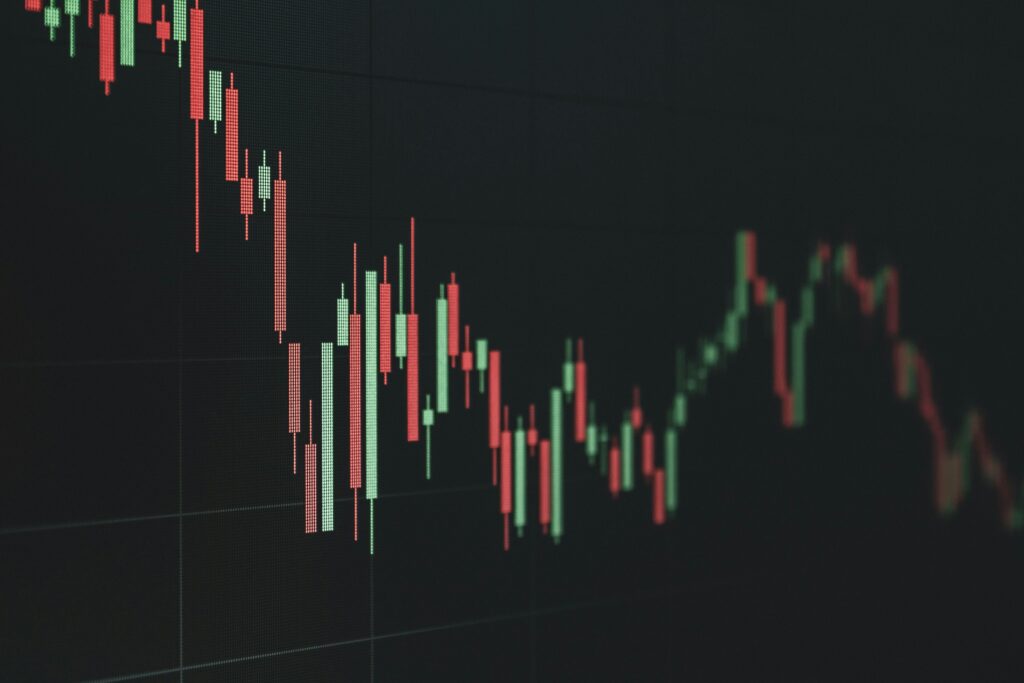Understanding Market Volatility
Volatility, in trading terms, is simply the measure of how much and how quickly prices move. It doesn’t care about direction—whether something’s climbing or crashing, both are signs of a market that’s volatile. Traders watch volatility because it tells them how uncertain or reactive the market is at any given moment.
Several factors can spark sharp price movements. In traditional markets, volatility often comes from interest rate changes, geopolitical news, or surprise earnings reports. In crypto, it’s even jumpier—regulatory announcements, whale activity, or a viral tweet can cause sudden swings. Thin liquidity and 24/7 trading hours amplify that effect.
Volatility sometimes feels like chaos, but for traders, it’s a double-edged sword. Yes, it increases risk—prices swing wide, and mistakes get expensive fast. But it also creates openings. Big moves mean more chances to enter and exit with impact. The key: knowing when to engage and when to step back. Traders who thrive under volatility don’t predict it—they respond to it with a plan.
Types of Volatility Traders Should Know
Volatility is more than just a buzzword—it’s a core ingredient in every trader’s playbook. But it comes in shades.
First, you’ve got historical volatility. This one’s math-based. It looks backward at how much an asset’s price has swung over a set period. If the chart’s been looking like a seismograph lately, expect historical volatility to register high. Then there’s implied volatility, pulled from options pricing. It’s forward-looking—what the market thinks might happen. Think of it like the weather forecast for risk.
Different assets carry different volatility DNA. Stocks? Generally moderate, unless earnings season or a Fed bombshell hits. Forex is steady—but when central banks surprise you, buckle up. Crypto? A whole different animal. Twenty percent swings before lunch aren’t uncommon. That’s the cost of a 24/7, sentiment-driven market.
So when does volatility signal opportunity, and when does it throw up a red flag? High volatility can mean big upside—if you’re nimble and risk-aware. It can also mean chaos, fake breakouts, and portfolio wreckage. A volatile market rewards preparation, not recklessness. If you don’t have a system, sit it out or stick to paper trades. The line between bold move and bad decision gets real thin when price charts start jittering.
Volatility isn’t good or bad. It’s a force. Traders either respect it—or get steamrolled.
Adaptive Mindsets and Timeframes
When markets get erratic, rigid trading styles crack. Tight conditions call for fluid thinking. That means reassessing your timeframes and knowing when to step back—or step in. Some traders thrive on short-term volatility, using 5-minute charts and momentum bursts; others survive by zooming out, riding the storm with a longer lens. The key is knowing your edge and sticking to it.
Mental discipline matters more than market timing. Reacting emotionally—chasing green candles or panic-selling on dips—is where traders bleed capital. The smart ones map out a plan and execute it like muscle memory. No guesswork. No second-guessing.
Adaptability isn’t optional. It’s the difference between being in the game or getting wiped out when the floor shifts. Whether you’re scalping or swinging, keep your system tight, your head clearer, and your trades boring by design.
Tools and Assets Built for Volatility
Some tools aren’t built for stable markets—they’re made to thrive when things get rough. That’s where leveraged ETFs, options, and derivatives come in. Let’s keep it simple: leveraged ETFs aim to give you 2x or 3x the daily movement of an index. Big upside? Maybe. Bigger downside if timed wrong? Absolutely. They aren’t buy-and-hold material—they’re fast-twitch assets for tactical traders.
Options offer flexibility. Want to limit loss while staying exposed to upside? Buy a call. Expecting a slide? Consider a put. More advanced strategies—like straddles or spreads—let traders make plays purely on volatility direction, or lack thereof. But make no mistake: options aren’t forgiving. They expire, and fast.
Then there are derivatives, a broad category including futures and swaps. These are high-leverage tools with serious precision, but they require an understanding of margin, risk, and liquidity. Used wisely, they offer edge. Used recklessly, they offer tuition—paid in real money.
Volatility indices like the VIX are useful, but they’re not crystal balls. They measure expected volatility, not guaranteed chaos. A rising VIX often signals fear, but it can also be a contrarian marker for opportunity. Traders use it for hedging or sentiment signals, but relying on it alone is shaky ground.
And then there’s crypto. The asset class that practically lives on volatility. Bitcoin can move 10% on a news headline, and altcoins even more so. To many, that’s a red flag. But for seasoned traders, it’s unmatched terrain for short-term plays and liquidity grabs. Tools now exist to hedge or amplify exposure here too: crypto options, perpetual swaps, and tokenized leverage products.
For a deeper dive, check out Cryptocurrency Market Trends: What to Watch in 2023.
Final Takeaways
Volatility gets a bad rap, but it’s not the real threat. The real danger is showing up unprepared. Markets will move—hard and fast—because that’s their nature. What separates seasoned traders from everyone else is how they navigate that chaos.
Step one: know your tools. Don’t just throw indicators on a chart because a YouTube video said so. Learn them, test them, understand where they work and where they don’t.
Step two: sharpen your strategy. You need a system that fits you—your risk tolerance, your screen time, your goals—and you need to stick to it when the market starts swinging. Flexibility doesn’t mean randomness. It means adapting with discipline.
And finally, control the bias. Fight the urge to chase that big candle or panic-sell the dip. Emotional trades kill consistency.
Fast-paced markets reward those who stay calm, calculated, and grounded. Volatility isn’t a storm to avoid—it’s a landscape to study and use. If you’re prepped right, you don’t just survive it—you profit from it.


 Zoranna Orricsona, the founder of Factor Crypto Edge, is a visionary leader committed to making the complex world of cryptocurrency more accessible and transparent. With her passion for digital finance and blockchain innovation, she established the platform to deliver timely news, in-depth market analysis, and practical trading insights. Her dedication ensures that both novice and experienced traders can navigate the fast-evolving crypto space with confidence and clarity.
Zoranna Orricsona, the founder of Factor Crypto Edge, is a visionary leader committed to making the complex world of cryptocurrency more accessible and transparent. With her passion for digital finance and blockchain innovation, she established the platform to deliver timely news, in-depth market analysis, and practical trading insights. Her dedication ensures that both novice and experienced traders can navigate the fast-evolving crypto space with confidence and clarity.